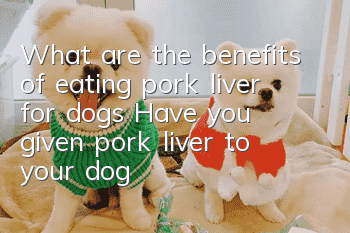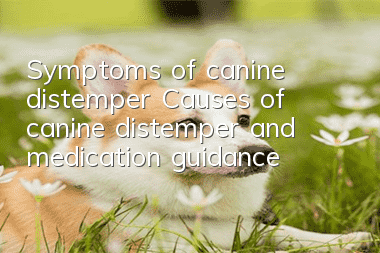What happens if your dog suddenly stops eating? How to solve it?

Physiological anorexia in dogs
It is seen during the teething period, estrus, pregnancy reaction, before labor, etc. Generally, there are no other symptoms, and the spirit, body temperature, breathing, and defecation are normal. There's nothing wrong, but I just don't want to eat anything!
Pathological anorexia in dogs
It is the early symptom of the disease and is often accompanied by other symptoms, such as fever, vomiting, diarrhea, cough, abdominal pain, etc. Seen in the early stages of overfeeding, stomatitis, dental disease, gastrointestinal diseases, and viral infectious diseases (canine distemper, coronavirus, etc.). Severe abdominal pain.
Solutions to Physiological Anorexia in Dogs
Generally speaking, physiological anorexia can be ignored, or just increase the palatability of food, but it cannot be tolerated blindly and be careful in raising dogs. Dogs are picky eaters. If it is caused by overeating, eating too much, or eating food that is not easy to digest, digestive drugs, such as probiotics, can be taken orally, and fasting for 24-36 hours can be performed, along with abdominal massage to help digestion.
Solutions for pathological anorexia in dogs
For pathological anorexia, the main treatment is the cause, and digestive drugs can only play a supporting role. If your dog's food intake begins to decrease recently, you should first check with a veterinarian to see if it is sick. If it is sick, you must treat it. If it is not sick, there are two ways to solve it:
First, stop eating for 24 hours. Drink plenty of water during the fasting period, and your appetite can usually be restored the next day. The second is to strengthen physical exercise and increase the amount of exercise for dogs. Generally, small toy dogs only need to prepare more toys at home, such as dog chews and pull ropes for them to play and exercise. Usually, making them run and jump can satisfy their exercise capacity. However, large dogs must exercise outdoors more. Walking the dog is a good way. Running with the dog not only exercises the dog, but also exercises yourself; the dog's appetite increases and his own weight also decreases.
Fever in dogs can cause loss of appetite
When dogs have a fever (normal body temperature of dogs: 37.8℃-39.2℃), their appetite decreases significantly. The desire to drink will also decrease in the short term, and people often feel depressed.
Fever is the most common reason why dogs do not eat or drink (fever is a clinical symptom rather than the real cause), which can be determined by measuring with a thermometer; this is mainly because too high a temperature destroys the digestive enzymes in the gastrointestinal tract. Caused by reduced activity. When you find that your dog has a fever, there is no need to rush to reduce the fever, and there is no need to worry too much.
Low fever within 1℃ is good for the body in a short period of time. Generally, ordinary anti-inflammatory treatment is enough. However, if the temperature exceeds 1℃, it should be controlled with antipyretic drugs in time. It is essential to prepare a special thermometer for dogs at home so that you can keep track of your dog's physical condition.
In addition, if your dog has been treated with the above methods, but the effect is not obvious, you should be careful! It is best to take it to the pet hospital for examination in time so that the doctor can furtherDiagnosis and treatment to see if more diseases are present. Early treatment, early health~
- Pay attention to three points when bathing your dog. You don’t have to be too diligent in bathing your dog.
- Key points for caring for elderly dogs. What diseases are easy for elderly dogs to get?
- Is it necessary to shave the dog’s lanugo? Please choose May to shave your dog!
- When taking your dog to the pet hospital for medical treatment, you need to provide the veterinarian with these 9 pieces of information
- What are the physical examination items for dogs? List of physical examination items for different ages
- What to do if your dog has tear stains? Four tips to help you improve your dog’s tear stains
- Shar Pei Dog Breeding Do you know how to raise a Shar Pei dog?
- How to choose clothing size for your dog The best dog dressing guide
- What's going on with the dog's butt mopping the floor? Do you understand the reason?
- Several fatal diseases in elderly dogs. Owners should pay attention to them



